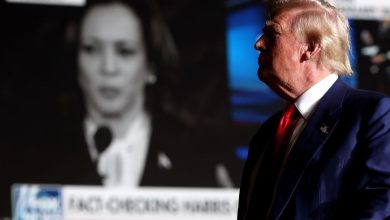Are Crypto Treasury Companies Selling Air? Inside An $80Billion Bubble

MIAMI, FLORIDA – JUNE 04: MicroStrategy CEO Michael Saylor walks through the Bitcoin 2021 … More
The crypto treasury company trend has exploded since MicroStrategy first bought bitcoin in 2020. Companies like SharpLink Gaming (SBET), which announced a massive $425 million private placement to fund an ethereum treasury, and dozens of others have followed suit. Yet despite billions flowing into these vehicles, crypto prices haven’t moved much beyond what you’d expect from regular market forces.
According to Founder of Youtube channel Crypto Banter and CEO of Onchain Capital Ran Neuer there’s a counterintuitive explanation for this phenomenon. In his view, these companies aren’t actually buying crypto off the open market in meaningful quantities. Ran argues they’ve become sophisticated vehicles for crypto natives to exit their positions at premium valuations while retail investors pay inflated prices for crypto exposure they could get cheaper elsewhere.
The Original Crypto Treasury Playbook
Microstrategy price as of July 2025.
MicroStrategy created the original playbook. Back in 2020, before bitcoin ETFs existed, the company provided institutional investors a way to get leveraged bitcoin exposure through traditional capital markets. Michael Saylor’s genius was using both debt and equity financing to tap into the $80 trillion traditional finance ecosystem, compared to crypto’s then-$3 trillion market.
The strategy worked brilliantly. MicroStrategy raised billions and accumulated 450,000 bitcoin by January 2025, making it the largest corporate bitcoin holder globally. The company trades at a premium to its net asset value because investors pay extra for the leverage component – the difference between what debt holders require as returns versus equity holders.
But something changed after the bitcoin ETF launched. Institutional investors could now get direct bitcoin exposure without the MicroStrategy premium. Yet the treasury company trend accelerated rather than slowed down.
The New Generation of Crypto Treasury Companies
CANADA – 2025/05/01: In this photo illustration, the SharpLink Gaming logo is seen displayed on a … More
Recent examples show how the playbook evolved:
SharpLink Gaming arranged a $425 million private placement specifically to buy ethereum, transforming from a sports betting technology company into an ethereum holding vehicle.
Upexi raised over $300 million across multiple rounds in 2025 to accumulate 1.9 million Solana tokens worth approximately $380 million.
GameStop issued $1.5 billion in convertible notes to purchase 4,710 bitcoin, with plans for additional debt offerings.
Bit Origin announced plans to raise $500 million specifically for a dogecoin treasury.
The pattern is consistent: companies pivot to crypto, announce massive fundraising rounds, and their stock prices surge on speculation.
Why Crypto Treasury Prices Aren’t Moving Crypto Markets
Ran Neuner at Token 2049 Dubai
Here’s Neuner’s key insight that most observers miss: these treasury companies aren’t actually net buyers of crypto. They’re simply redistribution mechanisms.
Take SharpLink Gaming’s ethereum deal. The $425 million didn’t come from cash-heavy institutions looking to buy ethereum. It came from crypto investors who already held ethereum and wanted to exchange it for publicly traded shares at a premium.
The process works like this, as Neuner describes it:
imagine someone comes to you and says “do you have any ETH?” And you say to me, yeah, I’ve got 10 ETH. And I say to you, why don’t you give me those 10 ETH, which is valued at $35,000 today, and I give you $35,000 of shares in my new company… as soon as we announce to the market that this company is an ETH treasury company, the shares that you got at net asset value are going to be worth three times net asset value.
In other words, crypto native investors (VCs, early adopters, institutions) contribute their existing crypto holdings to the treasury company and receive an equivalent mount in shares. But once the “treasury” company is announced, the shares immediately trade at 2-4 times net asset value on public markets. Then, the crypto investors sell some shares to retail investors, recouping their original crypto investment and they’re left with additional “free” shares representing their premium.
It’s essentially a way for crypto insiders to sell their holdings to traditional finance investors at a markup, without actually moving the underlying crypto markets or having to go through complex regulatory processes for old crypto assets of uncertain origin.
The Crypto Treasury Numbers Don’t Add Up for Real Buying
Look at Upexi’s trajectory. The company claims to have accumulated 1.9 million Solana tokens, but much of this likely came from discounted purchases of locked Solana at below-market prices, or direct contributions from crypto investors rather than open market purchases.
As Ran Neuner explains, when you examine the investor lists for these treasury companies, they’re populated by crypto-native funds like Arrington Capital, Electric Capital, and Pantera – firms that already hold massive crypto positions. “They all have ETH. So all they’re doing is they’re putting their ETH in the vehicle, they’re getting the shares, they’re getting shares at net asset value, the shares are opening at 20 times net asset value, they’re cashing out the original investment,” Neuner observes.
The Ultimate Crypto Treasury Exit Strategy
For wealthy crypto natives, Neuner argues, treasury companies solve several problems simultaneously:
Liquidity: Large crypto holders can’t easily sell billions without moving markets against themselves. Treasury companies let them “sell” to themselves at favorable valuations.
Legitimacy: Converting crypto holdings into SEC-registered shares provides a cleaner asset class, potentially addressing regulatory concerns about the source of original crypto wealth.
Tax advantages: Swapping crypto for shares of equivalent value may avoid capital gains triggers in many jurisdictions.
Premium capture: Instead of selling crypto at market price, they effectively sell it at 2-4x through the treasury company structure.
The Crypto Treasury Retail Trap
As Neuner puts it: “Can you imagine you’re paying $35,000 for an eth now where you can just go and buy at whatever the price is today on Coinbase.” Retail investors buying these treasury company stocks are paying $3-4 for every $1 of underlying crypto value. They’re betting that the shares will trade at even higher premiums, or that the underlying crypto will appreciate enough to justify the markup.
This creates a dangerous leverage bubble built on speculation rather than genuine demand for the underlying assets. Each new treasury company announcement adds more leverage to the system without adding meaningful buying pressure to crypto markets.
“The sooner it lands up bursting, the better because the longer it takes, the more leverage will be built up. The bigger this bubble, the bigger the smack may actually be,” warns Neuner.
Why the Crypto Treasury Bubble Will Burst
History shows what happens to excessive leverage in crypto cycles. The 2017 cycle ended when ICO leverage collapsed. The 2021 cycle ended when algorithmic stablecoin leverage (Luna, FTX) unwound. As Neuner notes: “In every market, we’re creating excess leverage into a system. We’re not really adding any value or maybe we are by combining debt and equity, but there’s no way that that value is equal to the crazy and ridiculous premiums that these companies are providing.”
When crypto markets turn bearish, these treasury companies will trade at discounts to net asset value rather than premiums. Retail investors who paid 3x for crypto exposure will see their investments collapse faster than the underlying crypto assets.
The sooner this bubble deflates, the better. The longer it inflates, the more leverage builds up in the system, and the more painful the eventual unwind.
The Real Impact of Crypto Treasury Companies on Crypto
While treasury companies generate headlines and stock market volatility, Neuner contends their impact on actual crypto prices remains minimal. Although there will be an incremental buying pressure from these companies, and there is some value to making crypto accessible to institutional capital markets, at current price multiples they are fundamentally a proxy for hidden leverage. In his analysis, they’re primarily vehicles for transferring crypto wealth from insiders to retail investors at inflated valuations, not mechanisms for driving new institutional adoption.
Real crypto price discovery continues to happen in spot markets, through ETFs, and via genuine institutional adoption – not through the elaborate financial engineering of treasury companies trading at massive premiums to their underlying assets.
The crypto treasury company phenomenon reveals more about market psychology and the hunger for leveraged crypto exposure than it does about genuine institutional demand for digital assets. Until investors recognize this distinction, they’ll continue paying premiums for crypto exposure they could get more cheaply elsewhere.





